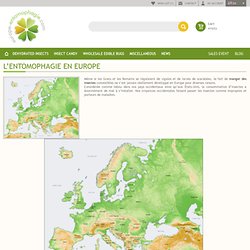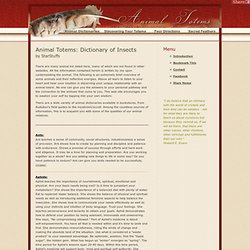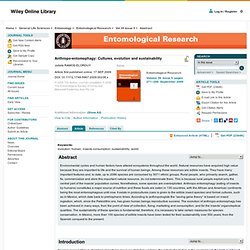

Analyse de l'opinion publique. Sondage Afin de prendre connaissance de l'opinion publique sur l'entomophagie, nous avons sondé 200 personnes sur la question suivante: "Seriez vous prêt à manger des insectes comme alternative aux viandes animales ?

". Nous les avons ensuite regroupées selon leur âge: - 40 personnes âgées de moins de 15 ans. - 40 personnes âgées de 16 à 25 ans. Insectes comestibles : L'entomophagie en France et dans le Monde. L'entomophagie en Europe? Quels sont les préjugés? Pourquoi est-ce si difficile à accepter?Insectes comestibles : L'entomophagie en France et dans le Monde. Même si les Grecs et les Romains se régalaient de cigales et de larves de scarabées, le fait de manger des insectes comestibles ne s’est jamais réellement développé en Europe pour diverses raisons.

Considérée comme tabou dans nos pays occidentaux ainsi qu’aux États-Unis, la consommation d’insectes a énormément de mal à s’installer. Nos croyances occidentales faisant passer les insectes comme impropres et porteurs de maladies. L’Entomophagie en Europe est une des premières préoccupations de la FAO. Encore de nombreux préjugés autour de l’entomophagie en Europe Croyance totalement infondée selon certains, les caractéristiques génétiques des insectes comestibles étant tellement loin des nôtres qu’il semble peu probable qu’ils puissent nous transmettre une quelconque maladie. Les insectes sont plus considérés comme de bons recycleurs que comme une source de nourriture à proprement parler. Petit à petit… Les Pays-Bas, ont été les premiers à ouvrir le chemin en développant l’élevage d’insectes.
L'entomophagie dans le monde. Où son mangé les insectes comestibles ?Insectes comestibles : L'entomophagie en France et dans le Monde. World Tour for edible bugs eater!

In 2010, according to estimates drawn by the FAO (United Nations Organization for Food and Agriculture), 2.5 billion people across a hundred countries were already eating edible insects. This practice has been mainly concentrated around the Asian and African continents. There is a simple reason for that, people residing on these two continents suffer from poverty and undernourishment. No less than eight hundred million people are directly or indirectly affected by malnutrition, forcing them to consider edible insects as more than just a delicious food but also as an affordable one. Being rich in proteins can't hurt either. Africa and its love for caterpillars. Insects Inter by Jessica C on Prezi. Animal Totems Dictionary of Insects - Insect Totems A-Z. There are many animal kin listed here, many of which are not found in other websites.

All the information contained herein is written by me upon contemplating the animal. The following is an extremely brief overview of some animals and their reflective energies. Above all learn to listen to your heart and hear your intuition in discerning your unique relationship with an animal totem. List of Edible Insects. Bugs you can eat, from A to Z!

(This is a work-in-progress. Please feel free to add to it. Also, Worpress does some funky stuff with formatting this page…) Agave worm: Also known as the maguey worm, these larvae of either the Hypopta agavis moth or the Aegiale hesperiaris are sometimes included in tequila bottles as proof of authenticity and alcohol content (tequila must be of high enough proof to preserve the worm). In Mexico, they are also eaten as part of a meal, and are highly nutritious. Ant: there are several varieties of ants that are eaten: Carpenter ants, leaf-cutter ants, honeypot ants, and even lemon ants. Honeypot ants have abdomens swollen with a nectar-like substance, which is used to feed other ants, sort of like a “living larder.” Leafcutter ants, also known as Hormigas Culonas in Spanish (which means big-butted ant) are eaten mainly in South America.
Anthropo-entomophagy: Cultures, evolution and sustainability - RAMOS-ELORDUY - 2009 - Entomological Research. Food implications From an anthropological socio-historical point of view of alimentation, it is necessary to understand the perceptions, conceptions, representations and universal symbols (Figs 3,4) that are tied to the social imagination of each community.

These symbolic representations include those of the body, health, disease, aesthetic, corporal models, the establishment of schedules, type of food, and when and what to eat.